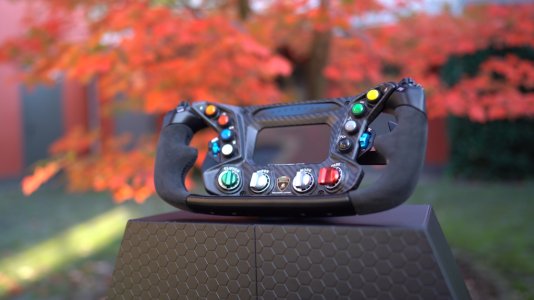Mr Latte
Premium
Confused with all the different types of inputs/outputs, connections, cables, speaker gauges and head spinning factors? Here is a short guide for when it comes to simply connecting your PC to amplifiers for tactile transducers including Buttkicker models.
Common Factors
Note that some connections/cable types can be used for various purposes. Some may look similar but can be different. This will be covered below.
The user has to determine what type of connections their amplifier hardware requires.
Also what length of cables is needed to connect components. Finally, what length/gauge of speaker cable is needed to connect to the tactile transducers being used.
A happy medium is probably the best way to determine what to spend on cabling. Some may be really cheap, others may look a bit flashier but still be affordable to the point you can spend rather high and even silly amounts on these required accessories.

* Images shown are not necessarily recommended types
Amplifier Connections
Consumer Industry Stereo & Audio Visual typical amplifier connections.
SMSL SA-98E shown:
Binding Post & Banana Plugs
These posts can be found on speakers and on the back of many consumer amplifiers. These are used to connect the speaker cable between the amplifier and speaker or tactile transducer. Many binding posts can accept a bare wire and tightened. The Bananna Plug connector is designed for a better quality connection and easy unplugging. However, on many products, these were banned in the EU countries due to safety warnings of someone being potentially stupid enough to try and plug 2-pin mains into them.
Audio Industry / Music Professional Amplifiers
Models like Behringer Inuke below, or other 4ohm Power Amplifiers will offer the following connections

SpeakON
Speakon connections are generally found on power amplifiers used by music industry professionals. This connection is suitable for the speaker cable and to output audio to the speaker / tactile connected. It is possible to find expanded variations of these but the standard "2 Pole" configuration is all that is needed for conventional speakers and tactile. However some "4 Pole" connections may have a more premium build. These can, of course, be wired for standard 2 cable purposes. More info is available in the link provided below.
These use a nice twist and lock feature. It can be purchased as connectors/cable individually and the user wires their own cable to them connecting some screws. Quick searches will find a how to pictorial or video. Although it is possible to purchase a cable for the suitable length required with the connectors already attached. These usually come with good thick rubber isolation, to prevent interference and protect the cable.
A popular brand for these cables is Neutrik and it may be worth spending a bit more to get a quality well-respected brand. Ebay and other places can be flooded with alternatives. The choice, however, is yours but do be wary of very cheap cables, yet there is no real need to purchase over expensive ones neither.
LINK
XLR
XLR cables are possibly the best choice to use as an input source connection you want to amplify.
On some amplifier models and interfaces, these may have XLR inputs suitable for dual connections that can accept both (¼)”(TRS) Jacks & XLR. These are both popularly used within the dj / studio & professional musical industries.

Unlike RCA the XLR cables are balanced, which greatly reduces the amount of noise/interference they can pick up. They are also much better for longer cable runs. ¼” inch cables can support a TRS (Tip/Ring/Sleeve) mode that uses a balanced signal, but often (most of the time) for guitar cables, they do not.
This could connect a PC Soundcard - Amplifier with XLR inputs (Behringer Inuke DSP).
Pay attention to the 3 Pins that connect to the 3 holes. Also notice the extra-thick rubber protective cover compared to RCA cables.

(¼“) (TRS) 6.35 MM Jack
These were commonly used in early telephone exchanges and are also known as
Phone-Jack / Headphone Jack / 6.3mm Jack / Quarter Inch Jack / Guitar Jack / Jack-Plug
Male / Female & Coupler Adapters
For each type of connection, it is possible to find Male/Female connection terminals.
It is typical to find a soundcard or the source output (console) is a female terminal as is the amplifier connection input commonly female. Therefore these require a male-male type lead to connect between both.
RCA
Instantly recognisable, as the RED/WHITE or sometimes found as RED/BLACK style connection. A very typical STEREO cable. These can come in many styles and of quality but all do the same thing. These have been used for decades with hi/fi, tv, video, console and audio household products.
As one of the more popular analog cable connections, these also have a vast range of adapters to connect with other cable terminals. The most common being 3.5mm Jacks.
Below are Male & Female stereo terminals for RCA connectors.
Common Factors
- Connection & Cable Type
- Male / Female Terminals
- Couplers / Extenders
- Length
Note that some connections/cable types can be used for various purposes. Some may look similar but can be different. This will be covered below.
The user has to determine what type of connections their amplifier hardware requires.
Also what length of cables is needed to connect components. Finally, what length/gauge of speaker cable is needed to connect to the tactile transducers being used.
A happy medium is probably the best way to determine what to spend on cabling. Some may be really cheap, others may look a bit flashier but still be affordable to the point you can spend rather high and even silly amounts on these required accessories.

* Images shown are not necessarily recommended types
Amplifier Connections
Consumer Industry Stereo & Audio Visual typical amplifier connections.
SMSL SA-98E shown:
Binding Post & Banana Plugs
These posts can be found on speakers and on the back of many consumer amplifiers. These are used to connect the speaker cable between the amplifier and speaker or tactile transducer. Many binding posts can accept a bare wire and tightened. The Bananna Plug connector is designed for a better quality connection and easy unplugging. However, on many products, these were banned in the EU countries due to safety warnings of someone being potentially stupid enough to try and plug 2-pin mains into them.
Audio Industry / Music Professional Amplifiers
Models like Behringer Inuke below, or other 4ohm Power Amplifiers will offer the following connections

SpeakON
Speakon connections are generally found on power amplifiers used by music industry professionals. This connection is suitable for the speaker cable and to output audio to the speaker / tactile connected. It is possible to find expanded variations of these but the standard "2 Pole" configuration is all that is needed for conventional speakers and tactile. However some "4 Pole" connections may have a more premium build. These can, of course, be wired for standard 2 cable purposes. More info is available in the link provided below.
These use a nice twist and lock feature. It can be purchased as connectors/cable individually and the user wires their own cable to them connecting some screws. Quick searches will find a how to pictorial or video. Although it is possible to purchase a cable for the suitable length required with the connectors already attached. These usually come with good thick rubber isolation, to prevent interference and protect the cable.
A popular brand for these cables is Neutrik and it may be worth spending a bit more to get a quality well-respected brand. Ebay and other places can be flooded with alternatives. The choice, however, is yours but do be wary of very cheap cables, yet there is no real need to purchase over expensive ones neither.
LINK
XLR
XLR cables are possibly the best choice to use as an input source connection you want to amplify.
On some amplifier models and interfaces, these may have XLR inputs suitable for dual connections that can accept both (¼)”(TRS) Jacks & XLR. These are both popularly used within the dj / studio & professional musical industries.

Unlike RCA the XLR cables are balanced, which greatly reduces the amount of noise/interference they can pick up. They are also much better for longer cable runs. ¼” inch cables can support a TRS (Tip/Ring/Sleeve) mode that uses a balanced signal, but often (most of the time) for guitar cables, they do not.
Below is a 3.5 MM Male - XLR Stereo Male cableThis could connect a PC Soundcard - Amplifier with XLR inputs (Behringer Inuke DSP).
Pay attention to the 3 Pins that connect to the 3 holes. Also notice the extra-thick rubber protective cover compared to RCA cables.

(¼“) (TRS) 6.35 MM Jack
These were commonly used in early telephone exchanges and are also known as
Phone-Jack / Headphone Jack / 6.3mm Jack / Quarter Inch Jack / Guitar Jack / Jack-Plug
Male / Female & Coupler Adapters
For each type of connection, it is possible to find Male/Female connection terminals.
It is typical to find a soundcard or the source output (console) is a female terminal as is the amplifier connection input commonly female. Therefore these require a male-male type lead to connect between both.
RCA
Instantly recognisable, as the RED/WHITE or sometimes found as RED/BLACK style connection. A very typical STEREO cable. These can come in many styles and of quality but all do the same thing. These have been used for decades with hi/fi, tv, video, console and audio household products.
As one of the more popular analog cable connections, these also have a vast range of adapters to connect with other cable terminals. The most common being 3.5mm Jacks.
Below are Male & Female stereo terminals for RCA connectors.
Last edited:






































